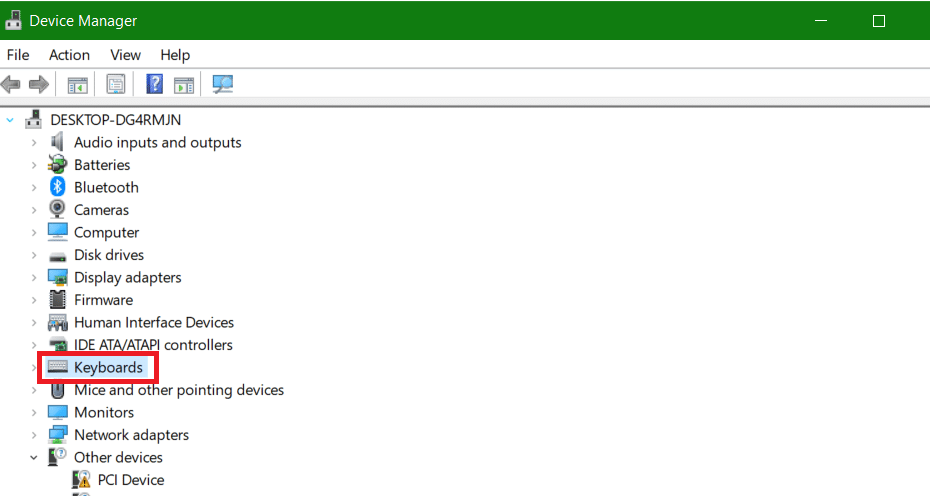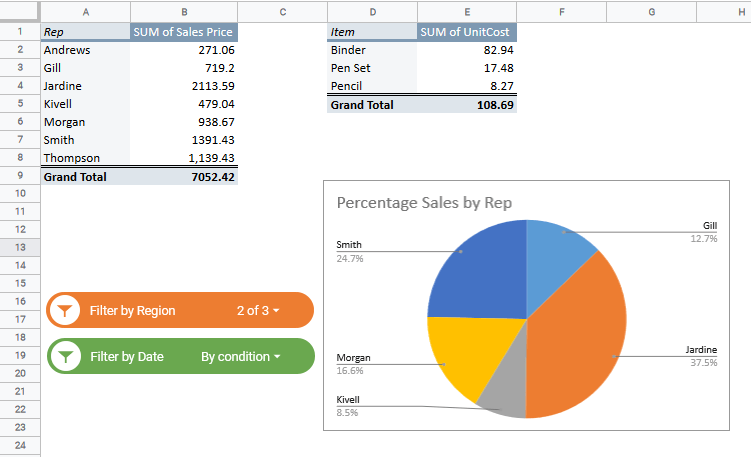How to move columns in Google Sheets? Google Sheets offers several methods for transferring columns around on a spreadsheet. It’s common to come back to the data and realize that how it is organized no longer makes the most sense.
You can use these three approaches on how to move columns in Google Sheets:
- Drag and drop
- Using the “Move” feature in the “Edit” menu
- Cut, insert, and paste
This Article Covers:
Why Move Columns in Google Sheets?
Learning how to rearrange columns in Google Sheets lets you make a spreadsheet more presentable. For example, I have a spreadsheet like this that contains information about registered users on my website:

I want to compare columns to see if there’s a trend with “car make” and what “city” a person lives in, but the “shirt size” column is between the two. So, to make it easier to read, I want to put those two columns next to each other.
Moving columns one by one to your desired position in Sheets is easy. But to move multiple columns simultaneously, they must be physically next to each other on the spreadsheet.
Non-consecutive columns will not move together; Google Sheets will move the last selected column.
How To Move Columns in Google Sheets with Dragging
I find the drag-and-drop method one of the most effective ways to move columns around a Google Sheet, regardless of how many columns it has.
Of course, this method can take some effort to control when moving multiple columns to a new location worth multiple screen scrolls.
- Select one or more columns you want to move. Do this by left-clicking on the letter right above the column header. The example below shows highlights from column E.

- Leave the mouse cursor over the column letters until it turns into a hand icon.
- After about a second, the hand icon will appear. Now, left-click on the letter and use the guide bar to select the columns you want to insert the selection between. The example shows moving column E between columns C and D.

Google Sheets has moved the column header “car make” from column E to column D, and all columns to its right have been moved over accordingly.
If you’re moving a column just one place to the right or left, it’s like learning how to swap columns in Google Sheets. You just need to interchange their positions.
Note: In this example, I have moved a single column, but you can also select multiple consecutive columns and move them together using the above steps.
How To Move a Column in Google Sheets With the Edit Menu
Google Sheets features a menu option that nudges a column selection, one to the left or one to the right. I like to use this method when making only minor adjustments.
- Select one column or multiple columns. The example shows selecting columns D, E, and F.

- Open the “Edit” menu and select “Move.”
- From the expanded menu, select “Column(s) left” or “Column(s) right.”

The following example demonstrates what happens when choosing “Columns right.” Now, columns D, E, and F all move to the right of column G. Because of the shift, column G is now column D.

Google Sheets automatically shifts the columns back over instead of creating whitespace. That’s how to move columns in a Google spreadsheet with the “Edit” menu.
How To Shift Columns in Google Sheets with Cut, Insert, and Paste
The “drag” and “move” methods don’t work as well when dealing with spreadsheets that have many columns. They can either be difficult to track or take a long time to accomplish a move across multiple columns.
Using the “Cut,” “Insert,” and “Paste” commands to move a column works well when the other methods are cumbersome.
- Select one or more columns you want to move, including the column header. The example shows selecting column C.

- Next, open the “Edit” menu and select the “Cut” command. Alternatively, you can use the Ctrl + X keyboard shortcut (CMD + X on Mac).

- Click on the destination column header next to where you want to move the selected columns. The example shows selecting column G.

- Right-click on the selected column and choose “Insert # column(s) left” or “Insert # column(s) right” in the direction you want to move the column relative to the destination column. The example shows choosing “Insert 1 column left.”

- Google Sheets will automatically highlight the new column. Open the “Edit” menu and select “Paste” to move the cut column into the new location. Alternatively, use the Ctrl + V keyboard shortcut (CMD + V on Mac).

- The original column you “cut” from is now blank. You can remove it by right-clicking on the blank column and choosing the “Delete column” option from the pop-up list.

Additional Tips to Use When Moving Columns in Google Sheets
- Ensure to unfreeze columns before moving them to a new location to avoid errors.
- Avoid merging cells in your spreadsheet to move columns quickly.
- Use the TRANSPOSE function in Google Sheets to convert your column data to a row.
- Moving rows in Google Sheets uses the same principle the same way you do for columns. Just drag them around, use the “Edit” menu, or cut and paste rows.
- Try grouping columns in Google Sheets to organize your data better.
- The only solution for how to move a column in the Google Sheets pivot table is to order and sort its columns.
Columns Moved, Data Organized
Learning how to move columns in Google Sheets makes sure you can avoid splitting cells and messing up spreadsheets. You can do this easily by dragging and dropping columns, using the “Move” feature in the “Edit” tab, or cutting and pasting entire columns in Google Sheets.
To improve your Google Sheets organization, check out this productivity course to learn how to manage your work using the GTD (Getting Things Done) framework.
I hope you find the methods in this tutorial helpful!
Related:






